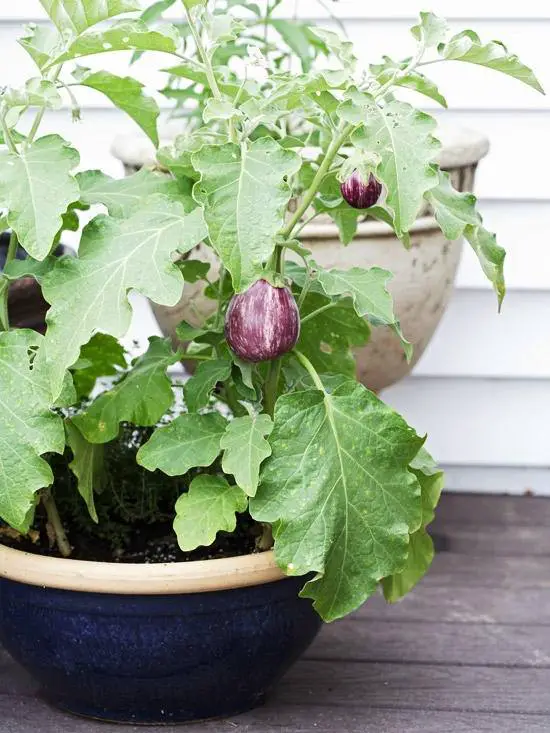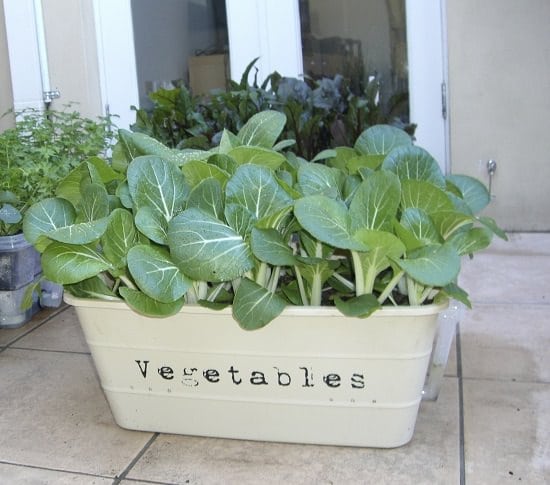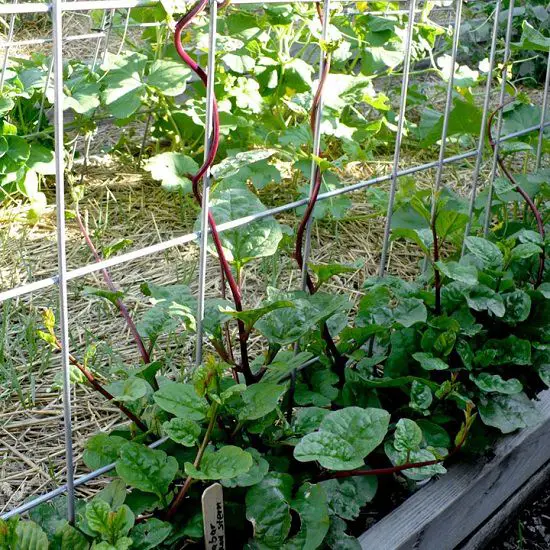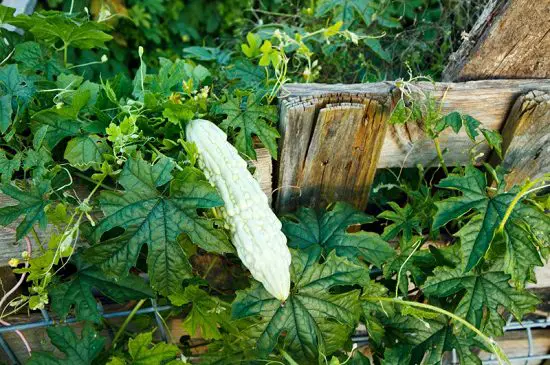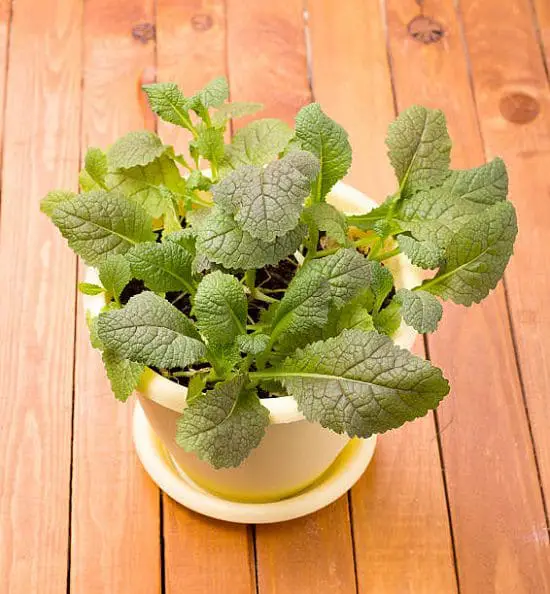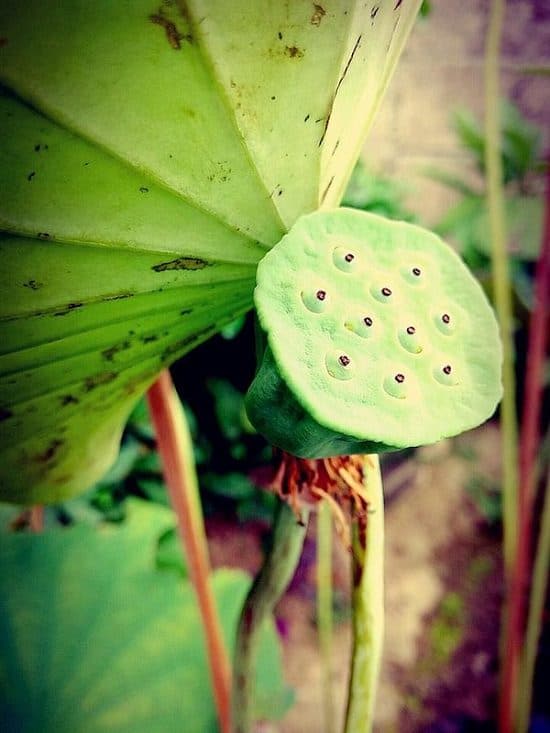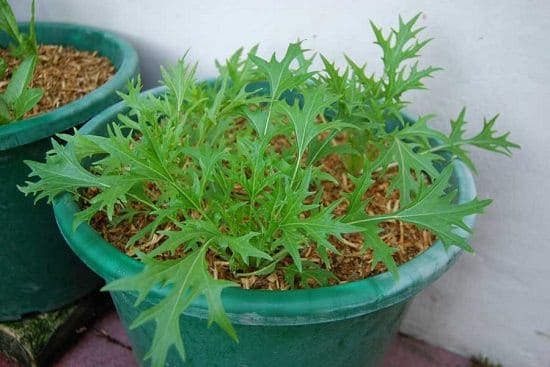Not only do these vegetables taste so good, but they are healthy as well! Here are some of the top Asian Vegetables to Grow in the Garden!
Asian vegetables are highly praised for their delicious flavors! They are also packed with vitamins, minerals, and many nutrients. These vegetables require no special care and can be grown like other vegetables. Here are some of the best Asian Vegetables to Grow!
Asian Vegetables to Grow
1. Asian Eggplant
Botanical Name: Solanum melongena
USDA Zones: 5-12
The deep-purple eggplant has a soft and spongy texture, with a shiny outer layer. You can add them to your diet as a low-calorie meal. This vegetable is rich in fibers and carbs. It is also beneficial in lowering heart diseases.
Growing Tips
- Harvest when the fruit is young, as it turns bitter with time. Support the plant with trellis or stake.
- Water often, but do not over-water it.
How to Consume: You can bake, roast, or grill it and prepare its detox juice as well. It can also be used in curries and mashed eggplant preparation!
Check out our article on growing eggplants in pots here!
2. Napa Cabbage
Botanical Name: Brassica rapa var. Pekinensis
USDA Zones: 4-7
Member of the cabbage family, napa cabbage has a mild flavor with a peppery tone. This oval-shaped cabbage has lettuce-like crispy stalks and edible green leaf sheaths. It is an excellent ingredient for preparing sandwiches and pickles, making it one of the best Asian vegetables to grow in the garden!
Growing Tips
- Protect this cold weather crop from the afternoon sun if you live in a tropical region.
- You can grow it in spring or fall under the temperature range of 45-75F (7-23 C).
How to Consume: Napa cabbage can be consumed raw in salads, stir-fries, and steamed food.
3. Daikon Radish
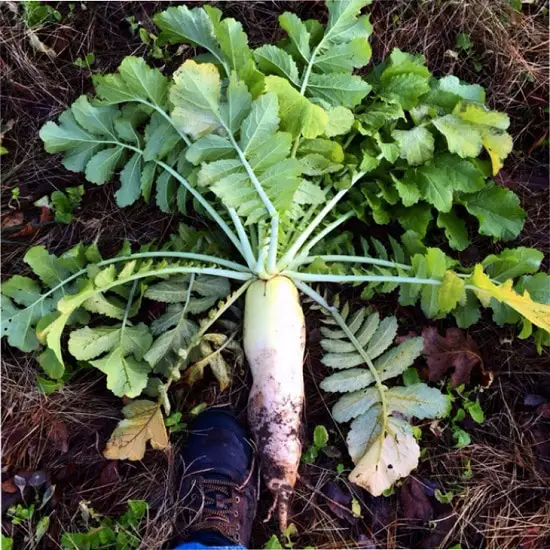
Botanical Name: Raphanus sativus longipinnatus
USDA Zones: 4-11
This white root veggie is low in calories and hence beneficial in weight loss. Mild and peppery flavored Daikon radish can be eaten raw in salads or stir-fried.
Growing Tips
- Grow them in the loose soil, and maintain sufficient spacing.
- Apply all-purpose fertilizer and keep the temperature around 80F (27C) for good root growth.
How to Consume: You can bake or boil to use them in soups and stews. Or, cut them fresh in salads as Asians do.
Here are some of the best types of radishes to grow!
4. Bok Choy
Botanical Name: Brassica rapa var. Chinensis
USDA Zones: 4-7
Mature bok choy has dark-green leaves and crunchy, white stems. You can harvest it in 21-30 days, but do not wait long because its taste becomes bitter with time. It is one of the best Asian vegetables to grow in the garden!
Growing Tips
- Plant seeds half an inch deep in the pot after the last frost.
- It does well in partial shade, while you can place it in direct sun for around 3-4 hours in a frigid climate.
How to Consume: It is best used in stir-fries, braises, and stews. You can also pair it with roasted meat.
Want to grow bok choy in pots? Click here!
5. Chinese Broccoli

Botanical Name: Brassica Oleracea Var. Alboglabra
USDA Zones: 7-10
Blue-green leaves and crunchy stalks of Chinese broccoli are the crucial ingredients in Asian cuisines. This bittersweet flavored broccoli is rich in vitamins, iron, and phosphorus.
Growing Tips
- Grow it in fall or summer, under the full sun nurturing.
- Water daily until the seeds germinate with a mist spray, then reduce this rate to once a week.
How to Consume: You can eat its leaves and stalks raw after blanching them or even serve it with oyster sauce.
Here’s how you can grow Romanesco Broccoli!
6. Malabar Spinach
Botanical Name: Basella alba
USDA Zones: 7-10
Member of the basellaceae family, thick and green leaves of Malabar spinach has a slight peppery tone. This spinach is nutritious, packed with vitamins and minerals.
Growing Tips
- Grow it in moist and fertile soil, and add a thin layer of straw mulch around the base.
- Install trellis or stakes to give this vine sturdy support.
How to Consume: It can be stir-fried and goes really well with curries and soups.
Check out our article on best vining vegetables for containers here!
7. Welsh Onion
Botanical Name: Allium fistulosum
USDA Zones: 6-9
Member of the onion family, these mild and crunchy sheaths have an onion-like taste; both its leaves and bulbs are edible.
Growing Tips
- You can plant them in early spring, 6-8 weeks before the last frost date. Nurture under bright light.
- Soil should be rich in organic matter, and its pH should be within 6.4 to 7.5.
How to Consume: The leaf sheath of welsh onion works well with salads, stews, and baked fish.
9. Bitter Melon
Botanical Name: Momordica charantia
USDA Zones: 6-11
Belonging to the Cucurbitaceae family, it has both culinary and medicinal uses. Rich in potassium, vitamins, and minerals, bitter melon helps in lowering sugar and cholesterol.
Growing Tips
- Grow this hot-weather crop in late spring or early summer at a place where it can receive at least 6-hours of sunlight.
- Sow seeds half an inch deep with a spacing of 12-inches between. Water regularly to keep the soil moist.
How to Consume: Its seeds can be cooked along with its core flesh.
Check out our article on growing bitter melon in pots here!
10. Asparagus Beans
Botanical Name: Vigna unguiculata ssp. sesquipedalis
USDA Zones: 8-11
This vegetable is cultivated for its green and tender pods, which contain seeds. Asparagus beans have a mushroom-like taste. It can be easily grown in summers and springs, making it one of the best Asian vegetables to grow in the garden!
Growing Tips
- Plant them in spring, when the temperature of the soil is above 65 F (18C).
- Sow seeds at least 3-inches apart and provide sturdy support to this vining plant with trellis or stakes.
How to Consume: This vegetable can be steamed or stir-fried and pairs best with stews.
11. Taro
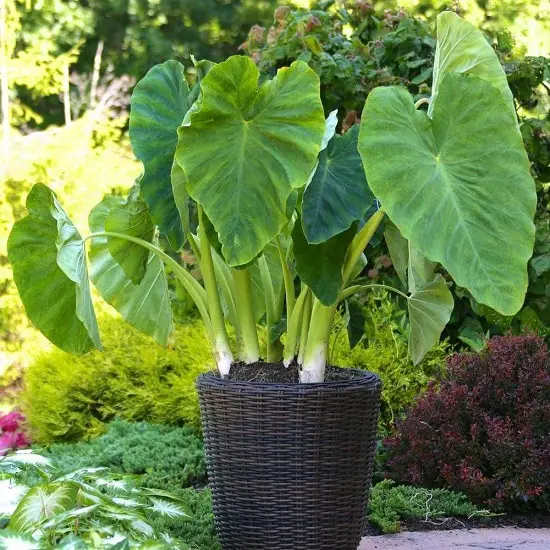
Botanical Name: Colocasia esculenta
USDA Zones: 9-11
This starchy root vegetable has brown outer skin with a fleshy inner part. It is also a staple food in Africa and Asia. This nutritious veggie helps in boosting the immune and digestive systems.
Growing Tips
- You can plant them year-round in a warm climate, but in colder regions, plant in early spring.
- Make sure that the bud faces up when you plant the tubers. Space them at least 3-6 feet apart.
How to Consume: This mild and sweet vegetable goes best with savory dishes.
Here’s how you can grow Taro!
12. Mustard Greens
Botanical Name: Brassica juncea
USDA Zones: 6-11
Mustard greens are the leaves of mustard plants. The peppery and crispy leaves are loaded with antioxidants and vitamins. You can grow them 4-6 weeks before the last frost in spring and 8-weeks before the first frost in autumn.
Growing Tips
- Plant seedlings in moist, well-draining soil under full sun.
- Give spacing of 12-18 inches between plants for productive growth.
How to Consume: They can be eaten raw or cooked. You can also steam, sauté, or simmer them.
13. Lotus Root
Botanical Name: Nelumbo nucifera
USDA Zones: 4-10
The underwater rhizomes of the lotus plant have a crunchy texture and are slightly sweet in taste. These starchy roots are equipped with lots of fibers and vitamins. It is one of the best Asian vegetables to grow in the garden!
Growing Tips
- Prune off the spent blooms and pale leaves during the growing season.
- The lotus will thrive only if it gets 6-8 hours of direct sunlight per day.
How to Consume: They can be deep-fried, braised, or boiled while using in different cuisines.
14. Galangal

Botanical Name: Alpinia galangal
USDA Zones: 9-11
This root vegetable is a close cousin of ginger, except that its flesh is more hard and pale. You can chew a fresh slice of galangal to cure stomach problems and nausea.
Growing Tips
- Keep the seeds 12-inches apart while planting and bury them 3-5 inches deep in the soil.
- Plant it in spring and harvest in 10-12 months.
How to Consume: Its citrus and piney flavor makes it a great addition to soups and curries.
15. Mizuna
Botanical Name: Brassica juncea
USDA Zones: 9-10
Its green stalks and fringed leaves have a peppery flavor. This cold seasoned vegetable is a perfect choice for novice gardeners! Sow its seeds in springs to harvest them in summer.
Growing Tips
- For growing in containers, pick one at least 6-inches deep.
- This vegetable will do best in full sun in cold regions and partial shade in warm climatic areas.
How to Consume: It’s an excellent addition to salad mix, stir-fries, and risotto.
16. Garlic Chives

Botanical Name: Allium tuberosum
USDA Zones: 4-10
Garlic Chives grow from fibrous bulbs and have green shoots with cream flowers. Growing up to 12-15 inches tall, they do well in pots and hedges.
Growing Tips
- Grow them in moist and fertile soil under the full sun.
- Apply three tablespoons of 16-16-8 all-purpose fertilizer to chives.
How to Consume: The green stalks can be used to prepare spring rolls, scrambled, and eggs.
17. Snake Cucumber
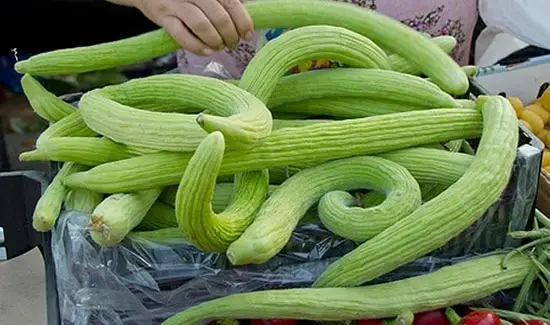
Botanical Name: Cucumis melo
USDA Zones: 4-11
Member of the guard family, this vegetable grows on the creeping vine. Mild and melon flavored cucumber is rich in vitamins, magnesium, and potassium.
Growing Tips
- To grow green cucumbers, the pH of the soil should be neutral (7) or slightly alkaline.
- Fertilize it with a slow-release, all-purpose fertilizer, once a week, during the growing period.
How to Consume: It can be eaten raw or paired with hummus to enhance its taste.
18. Fenugreek

Botanical Name: Trigonella foenum-graecum
USDA Zones: 8-11
Fenugreek seeds have several uses in cooking and medicines. It helps in controlling blood sugar levels as well. In India, its leaves are eaten as a spinach alternative. It is one of the best Asian vegetables to grow in the garden!
Growing Tips
- Soak the seeds for 24 hours.
- Plant them in compost-rich soil, and they will germinate in about 3-5 days.
How to Consume: You can have them raw after soaking them overnight. They can be grounded to add flavor to meat dishes as well.
Check out our article on growing Fenugreek in pots here!
19. Ivy Gourd
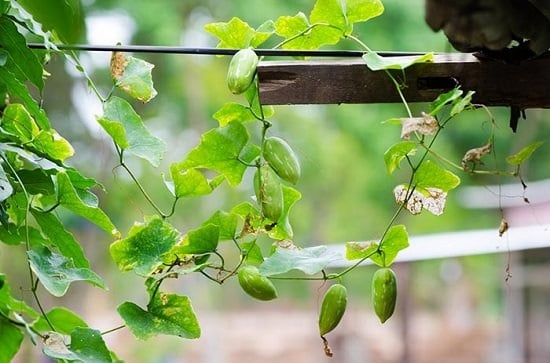
Botanical Name: Coccinia grandis
USDA Zones: 9-11
With various uses in Sri Lankan, Indian, Indonesian, and Thai cuisines, it is also quite popular for its uses in the kitchen. It is also rich in antioxidants and helps in repairing cell damage.
Growing Tips
- You can start seeds anytime if you live in a tropical or subtropical climate, except peak summers.
- Choose a site that receives full sun.
How to Consume: It can be used in soups and curries. You can use it raw in salads with other vegetables as well.
Here’s everything about growing Ivy Gourd!
20. Pointed Gourd
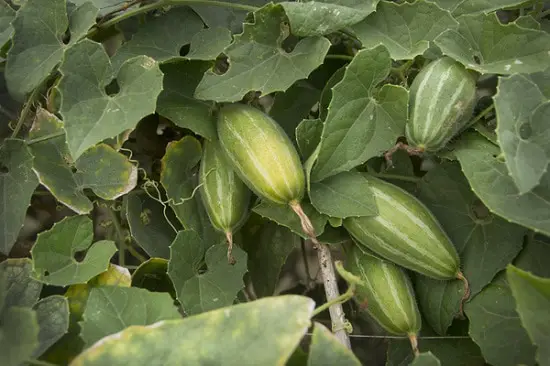
Botanical Name: Trichosanthes dioica
USDA Zones: 9-11
Pointed gourds are grown year-round. It is one of the healthiest vegetables and is also a good source of essential vitamins, helping in controlling blood sugar levels as well.
Growing Tips
- You can propagate the plant by cutting or root suckers.
- Keep the plant at a place that receives 5-6 hours of direct sunlight.
How to Consume: You can use it in soup, stew, and curries. It can also be eaten as fried and used for meat stuffings.
21. Indian Squash
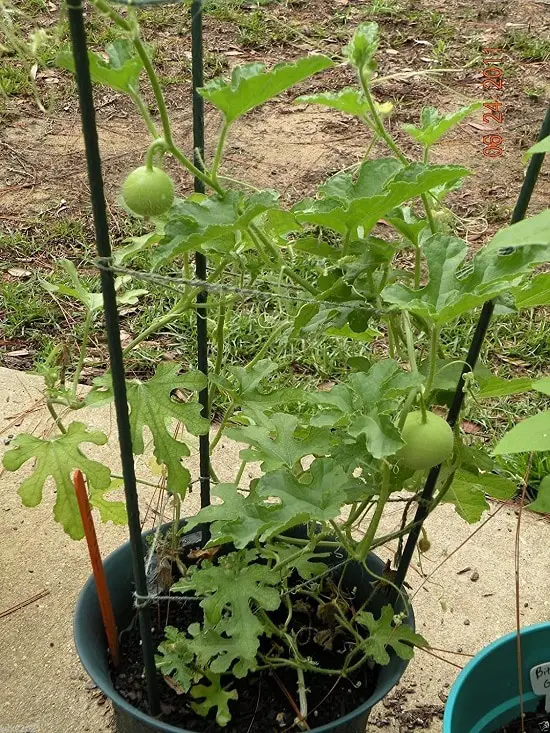
Botanical Name: Praecitrullus
USDA Zones: 3-10
Easy to grow and prolific producers, Indian Squash or Tinda is a delicious vegetable rich in many essential vitamins that make it good for health.
Growing Tips
- Grow it the way you grow zucchini.
How to Consume: Make mouthwatering Indian curries or try them in soups and sambhar.
22. Cluster Beans
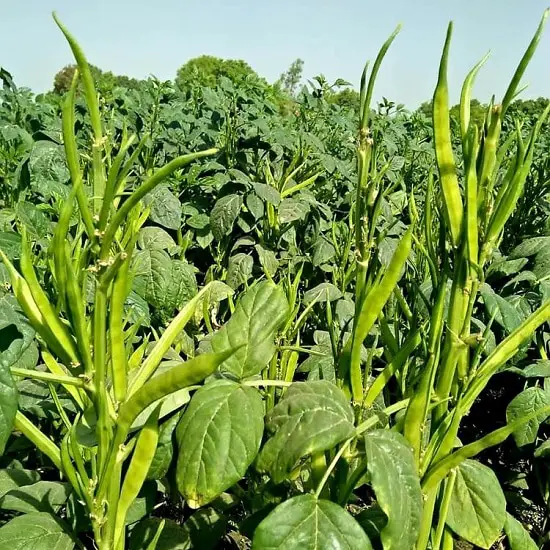
Botanical Name: Cyamopsis tetragonolobus
USDA Zones: 9-11
Cluster beans are rich in fiber and proteins that help the digestive system. Its seeds are dried and powdered as flour.
Growing Tips
- Sow seeds ½ to 1 inch deep, in loose and well-drained soil, with a lot of compost.
- Fertilize your plant with 10-10-10 fertilizer after a month of planting
How to Consume: They can be eaten in steamed, fried, or boiled form. You can also add them to curries.
Here’s everything you need to know about growing Cluster beans!
23. Amaranth Greens

Botanical Name: Amaranthus gangeticus
USDA Zones: 9-11
With so many health benefits to offer, Amaranth greens have earned a tag of superfood. They are rich in phytonutrients, antioxidants, minerals, and vitamins. In addition, it is one of the best Asian vegetables to grow in the garden!
Growing Tips
- Plant the seeds in compost-rich soil and water them regularly.
- Place the pot at a location that receives 4-5 hours of direct sunlight.
How to Consume: The leaves can be eaten raw in salads or used in stir-fries, soups, and simmered dishes. In South Asia, it’s used to make curries.
24. Chaphlu
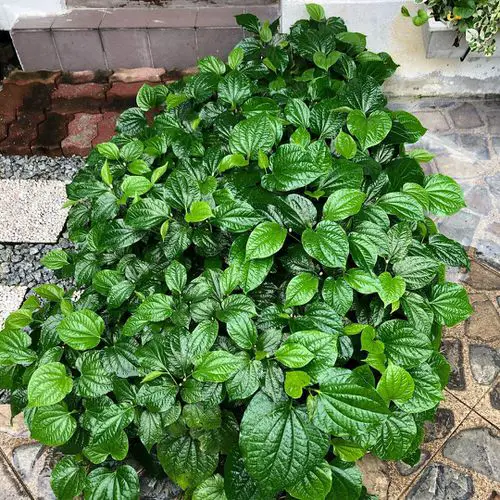
Botanical Name: Piper sarmentosum
USDA Zones: 8-11
It belongs to the Piperaceae family and used in many Asian cuisines, especially in Thai dishes as a wrapper. The leaves look like betel leaf but taste a lot milder.
Growing Tips
- Plant it where it can get a lot of bright light.
- Use a well-draining potting mix for best growth.
How to Consume: The fresh leaves are used to wrap rolls of fish, chicken, and mutton. You can also sauté it and pair it with several dishes.
25. Chickpea Greens

Botanical Name: Cicer arietinum
USDA Zones: 4-11
Also famous as the garbanzo leaves, you eat the chickpeas but the tender leaves of this plant taste so out-of-the-world. It’s prepared as spinach in the Indian subcontinent.
Growing Tips
- The plant does well in full sun.
- Use an 8-12 inches pot and avoid using nitrogen-rich fertilizers.
How to Consume: You can add the leaves to salads or sandwiches after sautéing.
26. Sweet Potato Greens
Botanical Name: Ipomoea batatas
USDA Zones: 6-11
You eat sweet potato tubers but have you ever tried its top–the leafy green vines? They are edible and tasty and eaten in some Asian and African countries. You’ll find many Chinese, Vietnamese, and Filipino recipes on the internet to prepare this.
Growing Tips:
Check out our article on growing sweet potatoes here
How to Consume: Chop the leaves finely and saute them to add in salads, sandwiches, and different recipes of your choice.


